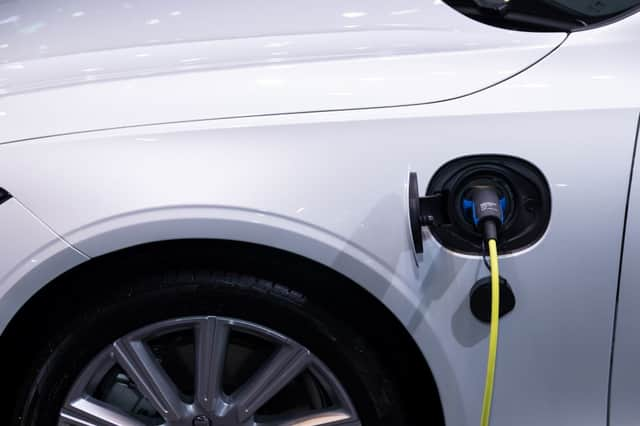The average motorist leaves their car running for 244 minutes every winter – generating a combined 107,000 tonnes of CO2 in the UK per year
This article contains affiliate links. We may earn a small commission on items purchased through this article, but that does not affect our editorial judgement.


A study of 2,000 UK motorists between 18-65 found six in 10 (64 per cent) let their engine idle during the colder months, with 41 per cent doing so at least three times a week.
Over a million motorists idle every single day during winter, producing a carbon footprint over a lifetime of 825kg, with an average idle time of 4.79 minutes.
Advertisement
Hide AdAdvertisement
Hide AdWhile one in six (15 per cent) motorists leave their car running for at least 10 minutes to warm up the entire car – including the interior.
The results reveal the combined amount of CO2 is more than the population of Cardiff catching a flight to Egypt for COP27.
The study commissioned by the Institution of Engineering and Technology (IET) highlights the whole-scale change required to meet the government’s 2030 net zero goals.
Farooq Yaqub, Member of the IET’s Council and EV expert, said:
Advertisement
Hide AdAdvertisement
Hide Ad“It only typically takes less than 30 seconds to lubricate your engine once running and when driving, your engine should quickly reach full operating temperature.
Excessive idling can also actually damage your engine’s components, including spark plugs, cylinders and exhaust systems – and an idling engine can produce up to twice the emissions of a car in motion.”


Millions of money wasted on fuel costs - whilst winter idling
The study also found two-thirds (66 per cent) of motorists doubt they will own an EV before the government ban the sale of new petrol and diesel cars in 2030 – though they could solve emission reduction.
Over half of motorists (55 per cent) who planned to buy an EV in the next two years are now delaying their purchases due to finance concerns, causing a possible accumulation of 327,500 tonnes of CO2 every year.
Advertisement
Hide AdAdvertisement
Hide AdOf those polled, seven in 10 said they were more likely to switch to electric if government grants were reinstated – with 67 per cent claiming they would buy an EV next, if money wasn’t a factor.
It’s not just the planet that’s worse off, as motorists with petrol or diesel vehicles squander a combined amount of £188 million on fuel costs whilst idling over winter – which could pay for more than 75,000 homes to be heated for the whole year.
Ironically, 65 per cent of motorists believe the common misconception of needing to warm up their car on a cold day, with four in 10 (42 per cent) believing it helps extend the car engine’s lifespan.
Farooq Yaqub also said:
“The transition to electric vehicles (EVs) will be so critical in the long-term in helping reduce emissions from petrol and diesel engines. Yet the research has demonstrated a clear financial barrier to this being a straightforward process, amplified by the cost-of-living crisis.”
Advertisement
Hide AdAdvertisement
Hide Ad“This is why it’s so important that the government provides further support and incentives for EV uptake if they are serious about meeting their 2030 net zero goals.”
Top tips to help lower motorists’ winter idling carbon footprint
- De-ice your windscreen – You can remove frost or snow without having to warm up your engine by using an ice scraper and de-icer.
- Myth busting – You do not need to warm up the engine before driving in your car. The operating temperature is quickly reached, and the emissions management devices are active in the meantime.
- Park inside – If possible, park your vehicle inside, such as in a garage, to avoid frost build-up and to ensure a more comfortable temperature when you first get in.
- 10 second rule – If you're going to be stationary for more than 10 seconds, it's best to turn off your engine; restarting does not increase fuel consumption. Alternatively, if your vehicle has a start/stop feature, make sure it is turned on.
- Route optimisation – Use real-time navigation apps to help you avoid traffic and thus spend less time idling. Occasionally driving slightly longer distances at more consistent speeds will not only get you to your destination faster, but will also help the engine run more efficiently.
- Right tool for the job – Diesel and gasoline vehicles have distinct characteristics, and using them for appropriate applications is critical to achieving higher efficiency and lower emissions. i.e., Diesel vehicles are more suited for motorway journeys.